How consumers will perceive and use email in 2020

Today we would like to echo a study that has been published by the DMA (Data & Marketing Association) together with Pure360: DMA: Consumer Email Tracker 2020. It explores consumer opinions and usage of email marketing, with the aim of uncovering possible areas of evolution and improvement.
The following is a summary of the points we found most interesting:
Contact channel preferences

As we can see in the graph, users clearly prefer the email channel as a means of contact in most situations, especially when it comes to receive promotions (59%) o order confirmations and updates (58%). However, when it comes to receive advice, information or tutorials slightly prefer (39% vs. 32%) face-to-face. These results demonstrate, once again, the great importance of email marketing throughout the customer journey.

Along the same lines, they take these three touchpoints as a reference: pre-purchase, post-purchase and customer serviceto see which is the preferred method of receiving communications. Again, the email channel clearly stands out above all others. It is interesting to see how channel preferences can change depending on where a user is in the buying process.

The GDPR also features prominently in this study. In fact, it shows how consumers are less concerned about how brands treat their personal data. However, one third of consumers (34%) still says that "often". wonder how the brands got their email address.
Personal use of email
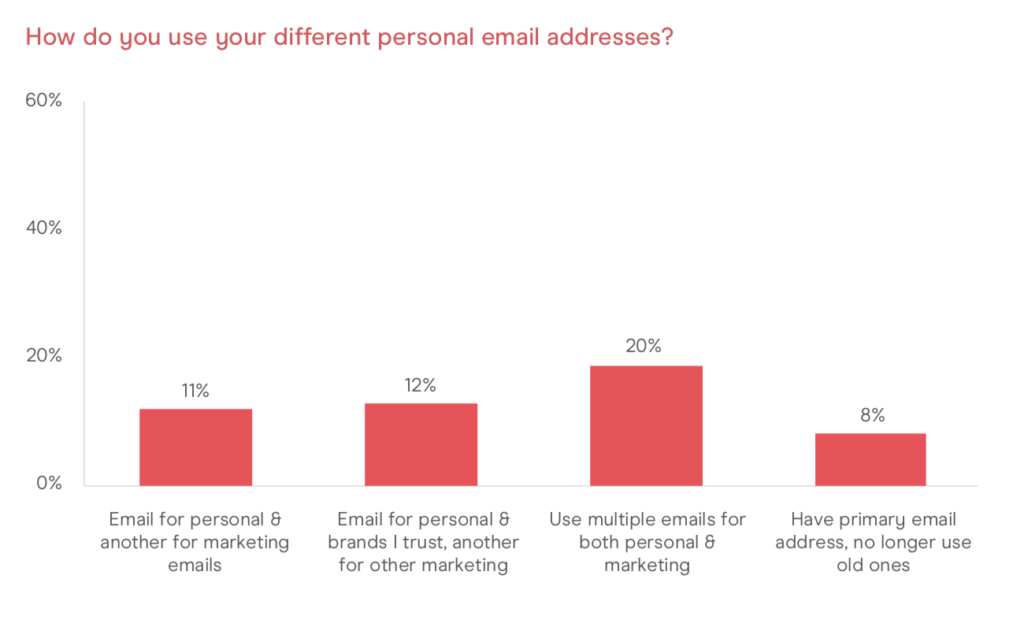
How do users use their e-mail? Well, the 20% says he uses it to receive both personal communications and marketing communications. Therefore, they do not distinguish between which brands they trust more or less or whether the emails received are of a personal nature or not.
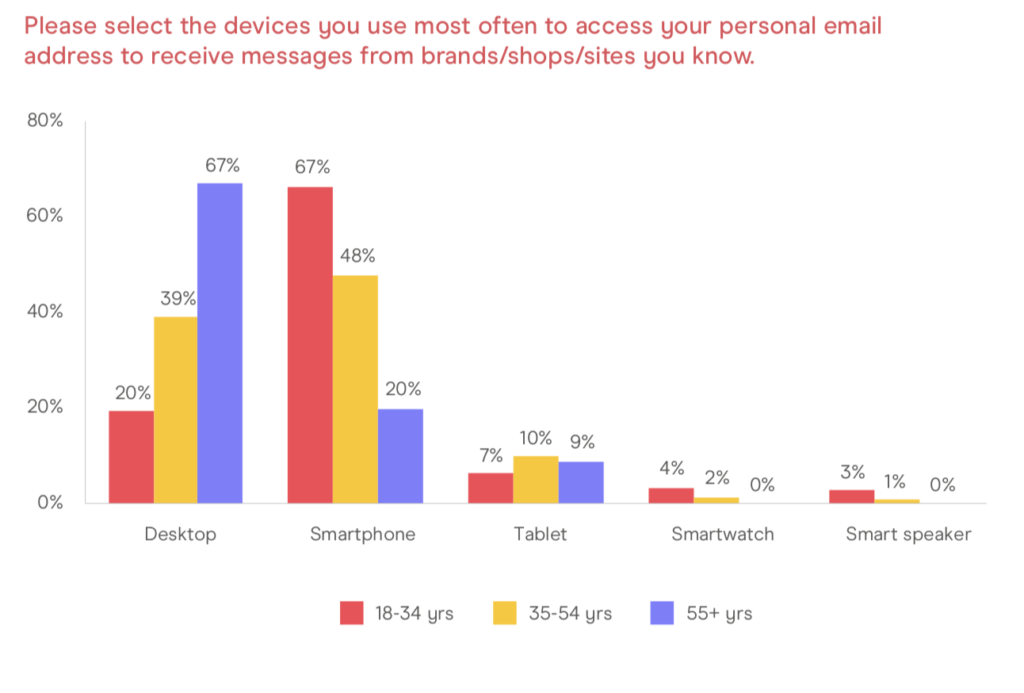
It is not surprising that the 67% of users located in the age range 18-34 years, access their email from their mobile phones. We can see that as the age range increases, the tendency to consume emails via smartphone decreases. A 20% in the case of users over 55 years old. On the other hand, devices such as tablets, smartwatches and smart speakers are still far from reaching the figures for the other two devices.
Receipt and opening of emails

Users stipulate that they receive approximately 54.9 emails per week. A surprising figure, if we compare it with the 73.3 emails received in 2017. Here we can see how the trend of mass mailings disappears and the personalisation of emails. The objective? To ensure that the contact with the subscriber is always relevant.
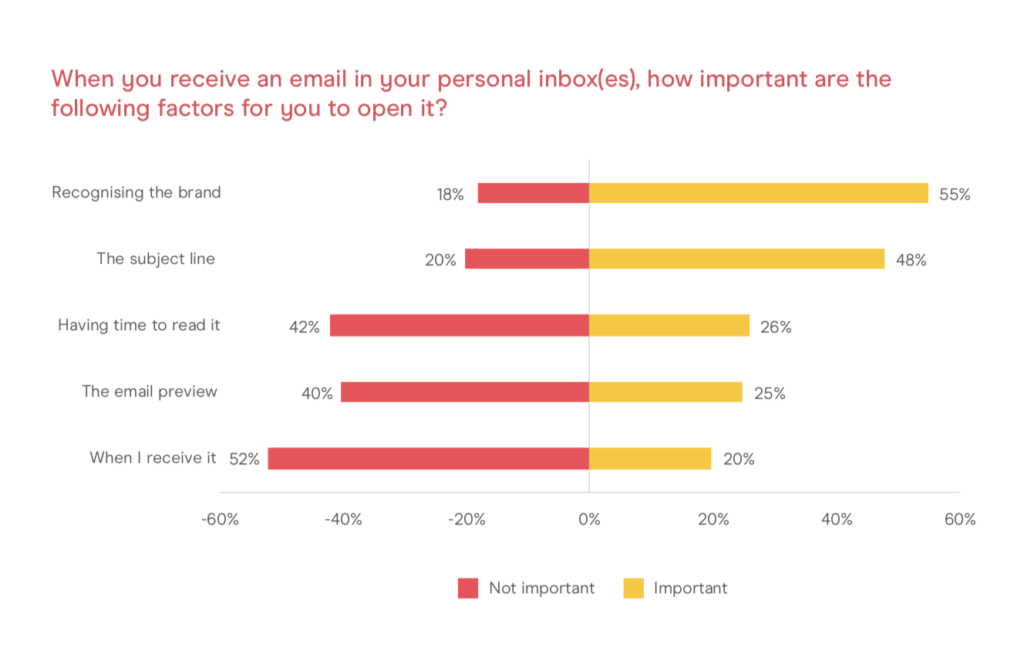
When users are asked what is the most relevant factor for them to open an email, the most relevant factor is the 55% agrees on the importance of brand recognition and a 48% pays more attention to the subject. Hence the need to find a subject matter that is catchyThe new, attractive and original design will make you stand out from the crowd.
Content of emails and actions carried out

The 65% of users agree that the contents they prefer to receive in an email are those related to discounts and offersTherefore, they have a direct benefit for them.
If we look at the rest of the results, we see again the need to understand subscribers to ensure that they are being delivered content that they really want to interact with, especially when it is not directly related to a transaction.

The vast majority of respondents agree that once they have opened the email, the actions they will take most frequently will be to click or save the email to look at it in more detail later. However, we see how users are not yet aware of the share emails and their respective content.
Registration and deregistration
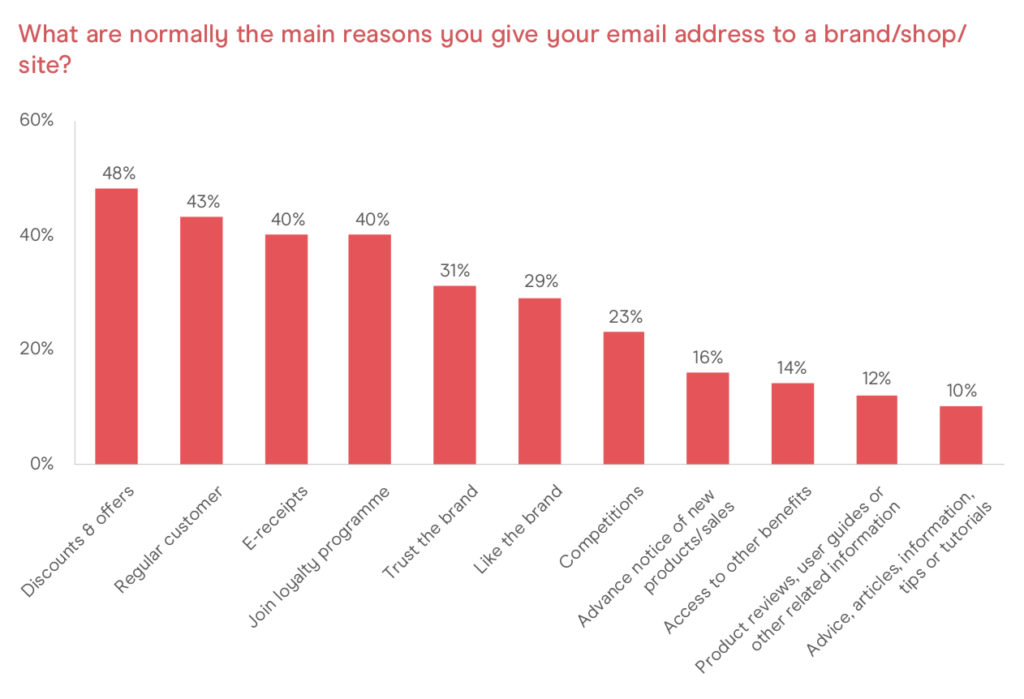
If we have previously seen that the emails that users prefer to receive are those which offer any discounts or offersIt is not surprising that the main reason for registration is the same (48%). However, they also agree that the fact of be a regular customer of the brandThe fact that they are interested in registering to receive your communications (43%).
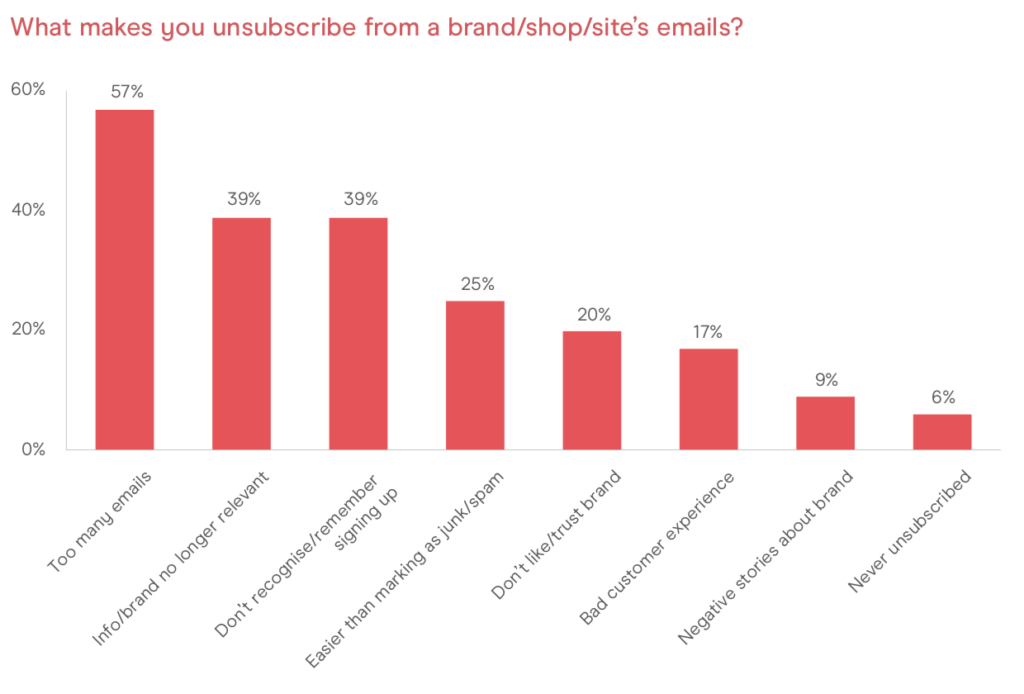
Finally, in this graph we see how the main driver for unsubscribing is receiving too many emails (57%). Hence the importance of knowing our database extremely well in order to be able to determine the optimal sending frequency. On the other hand, it is also reflected in the fact that if the information is no longer relevant to them o do not recognise the brand (39%), they may well want to deregister.
In the study you will find much more information about each of the areas and you will have the opportunity to have a more complete view about the email channel. We encourage you to read it! download and have a look at it, it's worth it!